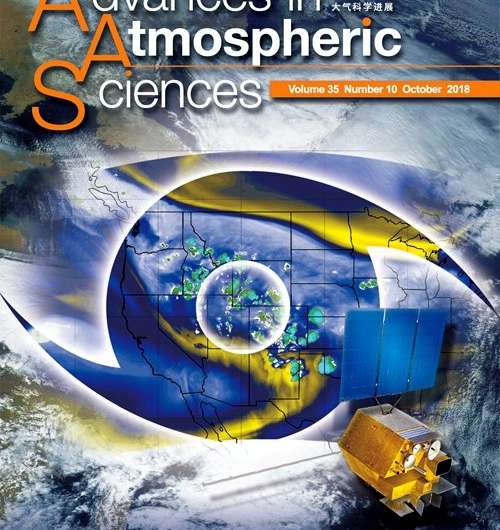New approach could help improve severe-storm forecasting

A geostationary hyperspectral infrared sounder can provide significant support to meteorologists to improve local severe storm forecasting, according to Dr. Jun Li, distinguished scientist at the Space Science and Engineering Center of the University of Wisconsin-Madison, and one of the authors of a recently published study.
"Accurate atmospheric temperature and humidity information with high temporal and spatial resolution is a key parameter for predicting local severe storms with numerical weather prediction models," says Dr. Li. "A high spectral resolution infrared sounder at geostationary orbit can provide near time-continuous, three-dimensional atmospheric thermodynamic information. This unprecedented information on the vertical structure of the atmosphere is important for nowcasting and forecasting high-impact weather events."
Dr. Li and his team have published their findings Advances of Atmospheric Sciences. The Geosynchronous Interferometric Infrared Sounder (GIIRS) aboard the Chinese Fengyun-4A satellite, launched in December 2016, became the first hyperspectral IR sounder in geostationary orbit. GIIRS data have been successfully applied to the China Meteorological Administration's operational global four-dimensional variational data assimilation and forecast system, and provided improved track and precipitation forecasts for typhoons Maria and Abbie. The European Organisation for the Exploitation of Meteorological Satellites (EUMETSAT) will in 2022 be launching the Meteosat Third Generation (MTG) series, which will also house a hyperspectral infrared sounder, according to Dr. Li.
In order to study and demonstrate the impact of a geostationary hyperspectral IR sounder on the forecasting of local severe storms, the team has developed a quick regional observation system simulation experiment (r-OSSE) framework and system, including the generation of a high-resolution natural run, observation simulation and validation, and data assimilation for impact studies on local severe-storm forecasting.
"A geostationary hyperspectral IR sounder can reduce the overall analysis and forecast errors with the current assimilation configuration, and further improvements may be achieved with more frequent assimilation and smaller thinning distance," Dr. Li believes. "How to effectively use the high temporal resolution information of the geostationary hyperspectral IR sounder in a data assimilation system becomes key to improving the forecasting of local severe storms and tropical cyclones, which needs to be studied further."
More information: Zhenglong Li et al, Value-added Impact of Geostationary Hyperspectral Infrared Sounders on Local Severe Storm Forecasts—via a Quick Regional OSSE, Advances in Atmospheric Sciences (2018).
Provided by Chinese Academy of Sciences



















